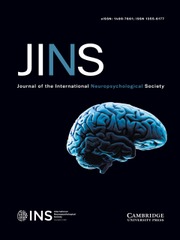Article contents
Emotions Are Rising: The Growing Field of Affect Neuropsychology
Published online by Cambridge University Press: 04 December 2017
Abstract
Thirty years ago, the neuropsychology of emotion started to emerge as a mainstream topic. Careful examination of individual patients showed that emotion, like memory, language, and so on, could be differentially affected by brain disorders, especially in the right hemisphere. Since then, there has been accelerating interest in uncovering the neural architecture of emotion, and the major steps in this process of discovery over the past 3 decades are detailed in this review. In the 1990s, magnetic resonance imaging (MRI) scans provided precise delineation of lesions in the amygdala, medial prefrontal cortex, insula and somatosensory cortex as underpinning emotion disorders. At the same time, functional MRI revealed activation that was bilateral and also lateralized according to task demands. In the 2000s, converging evidence suggested at least two routes to emotional responses: subcortical, automatic and autonomic responses and slower, cortical responses mediating cognitive processing. The discovery of mirror neurons in the 1990s reinvigorated older views that simulation was the means to recognize emotions and empathize with others. More recently, psychophysiological research, revisiting older Russian paradigms, has contributed new insights into how autonomic and other physiological indices contribute to decision making (the somatic marker theory), emotional simulation, and social cognition. Finally, this review considers the extent to which these seismic changes in understanding emotional processes in clinical disorders have been reflected in neuropsychological practice. (JINS, 2017, 23, 719–731)
- Type
- Section 1 – Brain Systems and Assessment
- Information
- Copyright
- Copyright © The International Neuropsychological Society 2017
References
- 11
- Cited by




